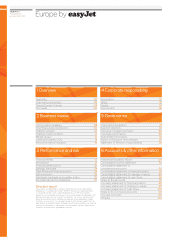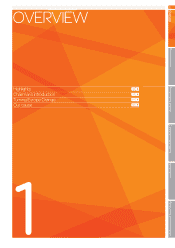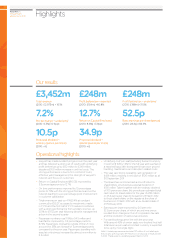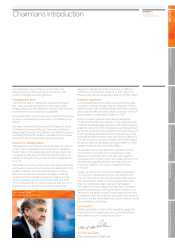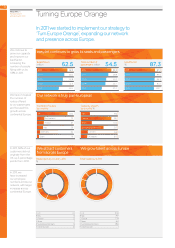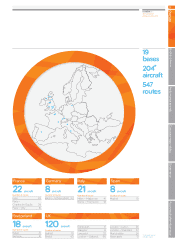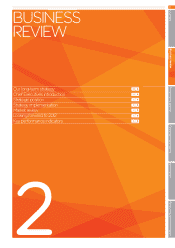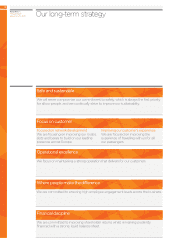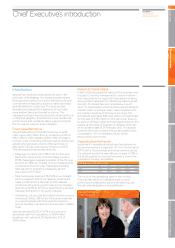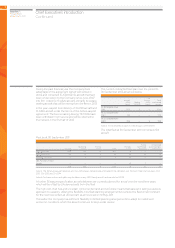EasyJet 2011 Annual Report Download - page 4
Download and view the complete annual report
Please find page 4 of the 2011 EasyJet annual report below. You can navigate through the pages in the report by either clicking on the pages listed below, or by using the keyword search tool below to find specific information within the annual report.
02
easyJet plc
Annual report
and accounts 2011
£3,452m
Total revenue
(2010: £2,973m) + 16.1%
12.7%
Return on Capital Employed
(2010: 8.8%) +3.9ppt
34.9p
Proposed dividend –
special (pence per share)
(2010: nil)
£248m
Profit before tax – reported
(2010: £154m) +60.8%
£248m
Profit before tax – underlying1
(2010: £188m) +31.5%
52.5p
Basic earnings per share (pence)
(2010: 28.4p) +84.9%
7. 2%
Pre-tax margin – underlying1
(2010: 6.3%) +0.9ppt
10.5p
Proposed dividend –
ordinary (pence per share)
(2010: nil)
– easyJet has made excellent progress over the past year
and has delivered a strong set of results with underlying
profit before tax up by £60 million to £248 million
despite a £100 million increase in unit fuel costs. This
strong performance is due to firm control of costs,
effective yield management, the strength of easyJet's
network and focus on customers
– Return on Capital Employed (ROCE) improved by
3.9percentage points to 12.7%
– On time performance improved by 13 percentage
points to 79% with the strong performance across the
network leading to a six percentage point improvement
in customer satisfaction
– Total revenue per seat up 4.1% (3.4% at constant
currency) to £55.27, as capacity investments made
inFY’10 and the first half of FY’11 matured combined
with a strong performance from ancillary revenue, up
12.9% to £11.52 per seat following decisive management
action in the second quarter
– Passenger numbers rose 11.8% to 54.5 million and
loadfactor improved by 0.3 percentage points to
87.3%. Passengers originating outside of the UK now
account for 56%, an increase of 3 percentage points
compared to the prior year. Passengers travelling with
easyJet on business increased by almost one million to
9.5 million
– Underlying cost1 per seat (excluding fuel and currency
movement) fell by 1.3% for the full year and was flat on
a reported basis with strong performances in ground
handling, maintenance and disruption related costs
– The year saw strong operating cash generation of
£424million, resulting in net cash of £100 million as at
30 September 2011
– The Board has recommended a one-off return to
shareholders, structured as a special dividend, of
£150million. Taken together with the ordinary dividend
of10.5 pence per share, this provides an estimated total
cash return to shareholders for the year of £195 million
or45.4 pence per share to be paid on 23 March 2012
tothose shareholders on the register at the close of
business on 2 March 2012 with an ex dividend date of
29February 2012
– Earnings per share improved by 24.1 pence to
52.5pence per share, of which around nine pence
resulted from changes in the UK corporation tax rate
and the resolution of various tax enquiries
– Forward bookings are in line with the prior year.
Witharound 45% of winter seats now booked, first half
total revenue per seat at constant currency is expected
to be up by mid single digits
Note 1: Underlying measures exclude £27 million of cost relating to
thevolcanic ash cloud and £7 million loss on disposal of A321 aircraft
in 2010. There were no underlying adjustments in 2011.
Highlights
Our results
Operational highlights


